Everton Football Club will officially unveil its new £500m stadium at Bramley-Moore Dock, on the banks of Liverpool’s River Mersey, at the start of the next football season in August 2025.
It will represent a major milestone in the history of the club, which has called Goodison Park (situated in the district of Walton, a little over two miles away) its home since 1892.
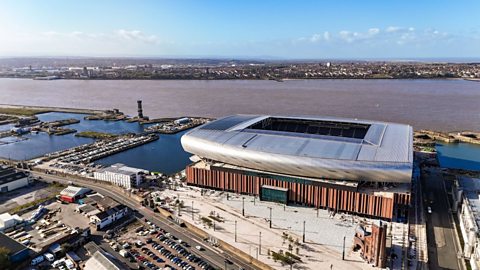
But as well as being a big move for the club, the new stadium will evoke memories of similar landmark occasions in the world of sport. Here, BBC Bitesize recalls the birth of some of the most famous stadiums around the world.
Camp Nou, Barcelona, Spain: 24 September 1957
What's in a name? Quite a lot!
For so many Barcelona supporters, Camp Nou has always been Camp Nou - even if that wasn't the stadium's official name for its first 43 years.
The stadium was initially called the Estadi del FC Barcelona, as endorsed by a 1965 referendum of club members. But despite this, that name never caught on and most people just referred to it as the 'camp nou' ('new ground'). In other parts of the world, including the UK, it is referred to as the 'Nou Camp'. The name game was finally decided during the 2000-2001 season, when the members voted again, this time in favour of making ‘Camp Nou’ the official title.
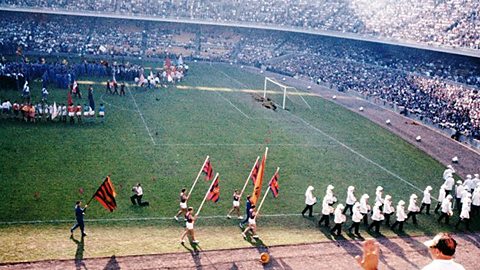 Image source, FC Barcelona/Camp Nou
Image source, FC Barcelona/Camp NouBarcelona's former Les Corts ground had been expanded several times, but the clamour had grown for a new ground to be built to meet demand after the league title triumphs of 1948 and 1949 - and in September 1950, the then club president, Agustí Montal y Galobart, signed an option to purchase a site in the area known as La Maternidad. Construction began in 1954.
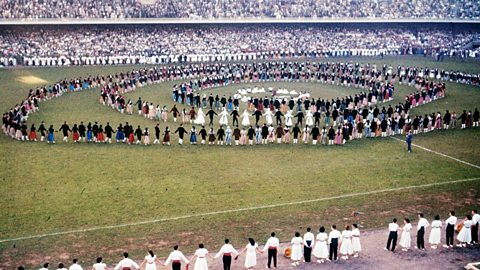 Image source, FC Barcelona/Camp Nou
Image source, FC Barcelona/Camp NouThe opening ceremony took place on 24 September 1957 - the day of the Mercè (patron saint of Barcelona) festival in the city - and was divided into two. A solemn morning event was religious in nature but, despite women being allowed in for free, only about half the seats were filled for a Mass given by the Archbishop of Barcelona, Gregorio Modrego.
Although work on the stadium was not yet complete, more than 90,000 spectators were able to attend the second event in the afternoon, which included a parade of all the major clubs in Catalonia, including RCD Espanyol; dancing and the release of thousands of white doves.
Maracanã stadium, Rio de Janeiro, Brazil: 16 June 1950
For many football fans, Brazil is the most glorious name in world football - and the Maracanã in Rio de Janeiro, built to host the World Cup in 1950, the greatest football stadium on the planet.
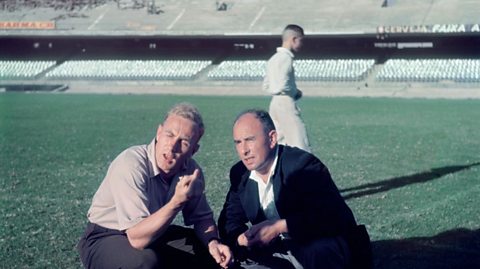
Likened to a giant spaceship, it was constructed between 1948 and 1950 and officially opened on 16 June 1950 with a friendly game between Rio de Janeiro All-Stars and São Paulo All-Stars.
When it hosted the World Cup Final between Brazil and Uruguay on 16 July, as Guinness World Records states, the Maracanã achieved the largest official attendance at a FIFA World Cup finals match. Official figures state 173,850, although some commentators believe the true number could have been more than 200,000. Whatever the true number, the crowd watched the hosts suffer a shock 2-1 defeat.
Madison Square Garden, New York, USA: 11 February 1968
There was nothing modest about the grand opening of the fourth, and current, Madison Square Garden, located on Manhattan’s West Side.
World superstars Bob Hope and Bing Crosby hosted a star-studded salute to the USO - the United Service Organizations, a charity which provides live entertainment and social facilities to members of the United States Armed Forces and their families - on 11 February 1968.
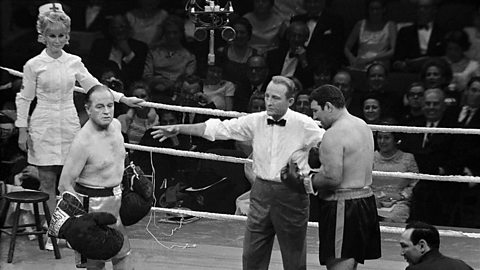
It was a headline-grabbing event full of fantastic photo and filming opportunities for the nation's media - one scene from the evening showed a slightly-bewildered Bob Hope in the boxing ring, perhaps not-so-ready to take on former world heavyweight boxing champion Rocky Marciano in a pretend bout, with singer Bing Crosby acting as referee.
The 20,000 capacity venue was described as a 150-million dollar sports and entertainment palace. The arena was considered an engineering marvel for its time, including its famous circular shape and unique, cable-supported ceiling, which contributes to its intimate feel.
Hampden Park, Glasgow, Scotland: 31 October 1903
After the opening match at the third - and current - Hampden Park, Glasgow's Evening Times was in no doubt about what lay ahead for the new stadium. It stated: "It is admittedly a ground for the greatest things, grand in conception and great in area, and only the greatest success can be deemed adequate reward for the enterprise which rendered such an enclosure possible."
Hampden is located in the Mount Florida area of Glasgow, and, as well as being Scotland's national stadium, remains the home of its original owners Queen’s Park FC - Glasgow's oldest association football club (it was founded in 1867 - Rangers wasn't formed until 1872, while Celtic was founded in 1887).
The attendance for that first game, on 31 October 1903 - which saw Queen's Park beat Celtic one-nil - was reportedly a modest 25,000. But Hampden would become known for hosting huge, record-breaking crowds.

On 7 April 1906 it played host to the first football match to be witnessed by more than 100,000 fans (102,741). It was a game which sent the home fans away happy, as Scotland triumphed 2-1 over England.
And in the photograph above, you can see how people were tightly packed onto Hampden's terracing in an atmospheric action photograph from the 1960 European Cup Final between Eintracht Frankfurt and Real Madrid, which saw a record crowd for a European final of 127,621.
This article was published in February 2025
The Stadium v Population Quiz
Could everyone in the Isle of Man get a seat in Wembley Stadium?
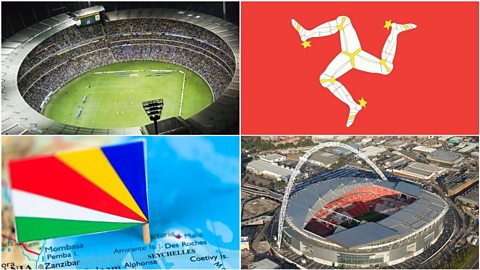
'It was us against the world': Celebrating the first ever official women’s England vs Scotland football match 50 years on
BBC Bitesize visited Wembley Stadium to speak to some of football's pioneering players.
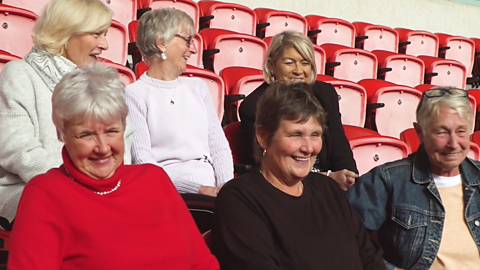
'How maths scored me a job in fantasy football'
An interview with Holly – maths teacher, mum-of-one and fantasy football influencer.
